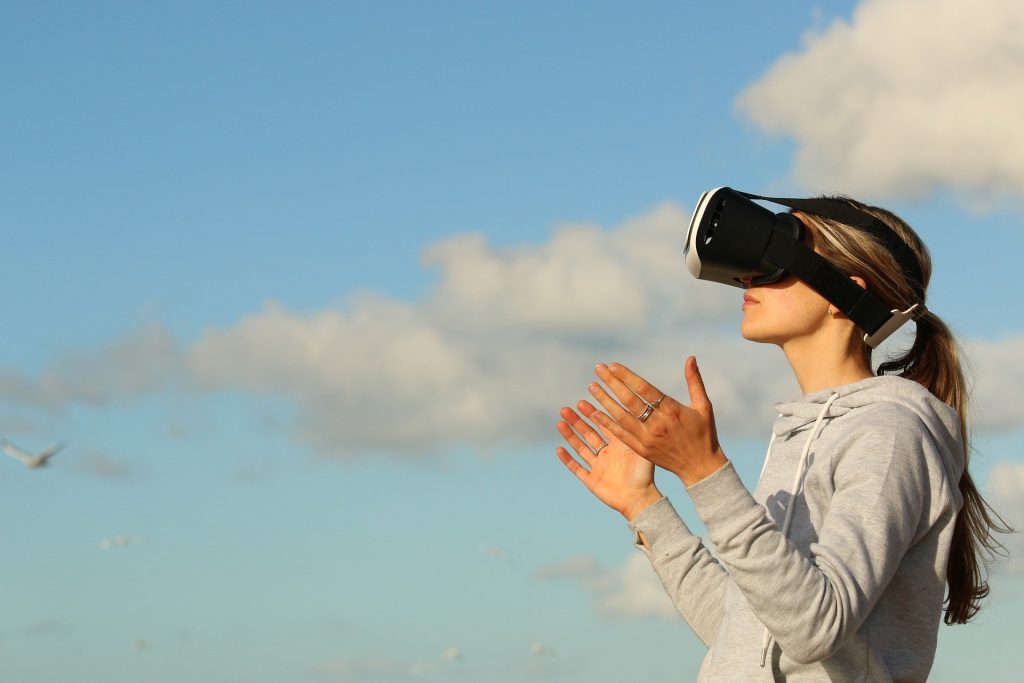Feeling Small or Standing Tall? Does Height Manipulation Affect Public Speaking Anxiety in Virtual Reality?

According to most studies, people’s number one fear is public speaking. Number two is death. Death is number two? Does that seem right? To the average person that means that if they have to go to a funeral, they’d be better off in the casket than giving the eulogy. (Jerry Seinfeld)
Public speaking might not, after all, rank as number one fear surpassing even death, as Seinfeld [6] here playfully indicates, but according to some studies, public speaking is indeed more commonly feared than death [2]. Speaking in front of an audience is undeniably, and across different cultures, one of the most apprehended forms of interpersonal communication [1][4]. As giving presentations and performing in front of others are a big part of today’s work cultures and environments, public speaking anxiety can have an unwanted impact on individual’s work life and prospects [3][5].
With the rise of the contemporary consumer virtual reality (VR) hardware and a number of downloadable applications replicating real-life scenarios, practicing public speaking in a safe and private virtual reality environment (VRE) has become a possibility. Available practice environments concentrate primarily on skill-based training, relying on an instruction-led approach, however, VR incorporates affordances that could potentially provide more dynamic and innovative training methods, a possibility of going beyond what is “real”.
Furthermore, as our working life is increasingly shifting towards technology-mediated communication models, VR is expected to gradually replace both physical and video meetings. Enhancement of users’ affective experiences through subtle manipulations of the VREs, could also offer new, innovative pathways and tools to help them feel more empowered and to manage their emotional states during real-time, virtually implemented work-based tasks and social interactions.
In this article, we present a strictly controlled experiment procedure in which 61 participants with multicultural backgrounds gave a five-minute impromptu speech in virtual reality, in front of a virtual audience. They were randomly assigned into two groups: one where they perceived illusion of tallness during the speech task and another, where they perceived themselves as shorter whilst giving their speech. The participants did not have any virtual bodies, but a first-person perspective view; the height manipulation was created simply by raising or lowering the camera angle of the head-mounted display.
The results of this study suggest that a height illusion created in immersive VRE can indeed affect the levels of anxiousness and arousal of the user during a speech task: participants perceiving themselves taller felt less anxious and had lower self-reported arousal compared to the participants who perceived themselves shorter during their speech. As such, the results reveal an empowering effect of a simple manipulation of the VRE and demonstrate the potential for VR to offer new and innovative methods for supporting users with their personal emotion management.
Please see the paper for full details.
Macey, A. L., Järvelä, S., Fernández Galeote, D., & Hamari, J. (2023). Feeling Small or Standing Tall? Height Manipulation Affects Speech Anxiety and Arousal in Virtual Reality. Cyberpsychology, Behavior, and Social Networking, 26(4), 246-254.
Journal: https://www.liebertpub.com/doi/full/10.1089/cyber.2022.0251
DOI: https://doi.org/10.1089/cyber.2022.0251
ResearchGate: https://www.researchgate.net/publication/369624259_Feeling_Small_or_Standing_Tall_Height_Manipulation_Affects_Speech_Anxiety_and_Arousal_in_Virtual_Reality
Authors
Anna-Leena Macey
Simo Järvelä
Daniel Fernández Galeote
Juho Hamari
Abstract
Social performance situations often constitute one of the most challenging communication tasks across different cultures. In today’s work environments giving presentations and performing in front of others are often essential and expected. Therefore, public speaking anxiety can have serious impacts on an individual’s job performance, career choice, and prospects. Contemporary consumer virtual reality hardware has made it possible to practise public speaking anywhere in a safe and private virtual reality environment (VRE). As VREs offer the means to practise real-life scenarios, they also make it possible to go beyond what is “real”; to replace simulations with more dynamic and innovative training environments. Furthermore, with occupational life is undergoing a significant shift towards technology-mediated working conditions, innovative tools and methods could also be used during virtually implemented real-life social interactions. This research aimed to study the ways in which an illusion of height, that is, perceived tallness versus perceived shortness, without any visible virtual body or representation, influences state speech anxiety and emotional response of participants during simulation of a stressful speech task. The experiment followed a strictly controlled between-subject procedure, and both self-reported and psychophysiological data were collected. Results indicate that participants perceiving the illusion of tallness felt less anxious and had lower self-reported arousal compared to participants with the illusion of shortness. This implies that even a simple, visual, first person-perspective manipulation of the VRE could help individuals to reduce their stress responses during a task-oriented situation.
References:
[1] Daniels MM, Palaoag T, Daniels M. Efficacy of virtual reality in reducing fear of public speaking: A systematic review. IOP Conf Ser Mater Sci Eng [Internet] 2020; 803(1):012003; doi: 10.1088/1757-899X/803/1/012003



Sorry, the comment form is closed at this time.